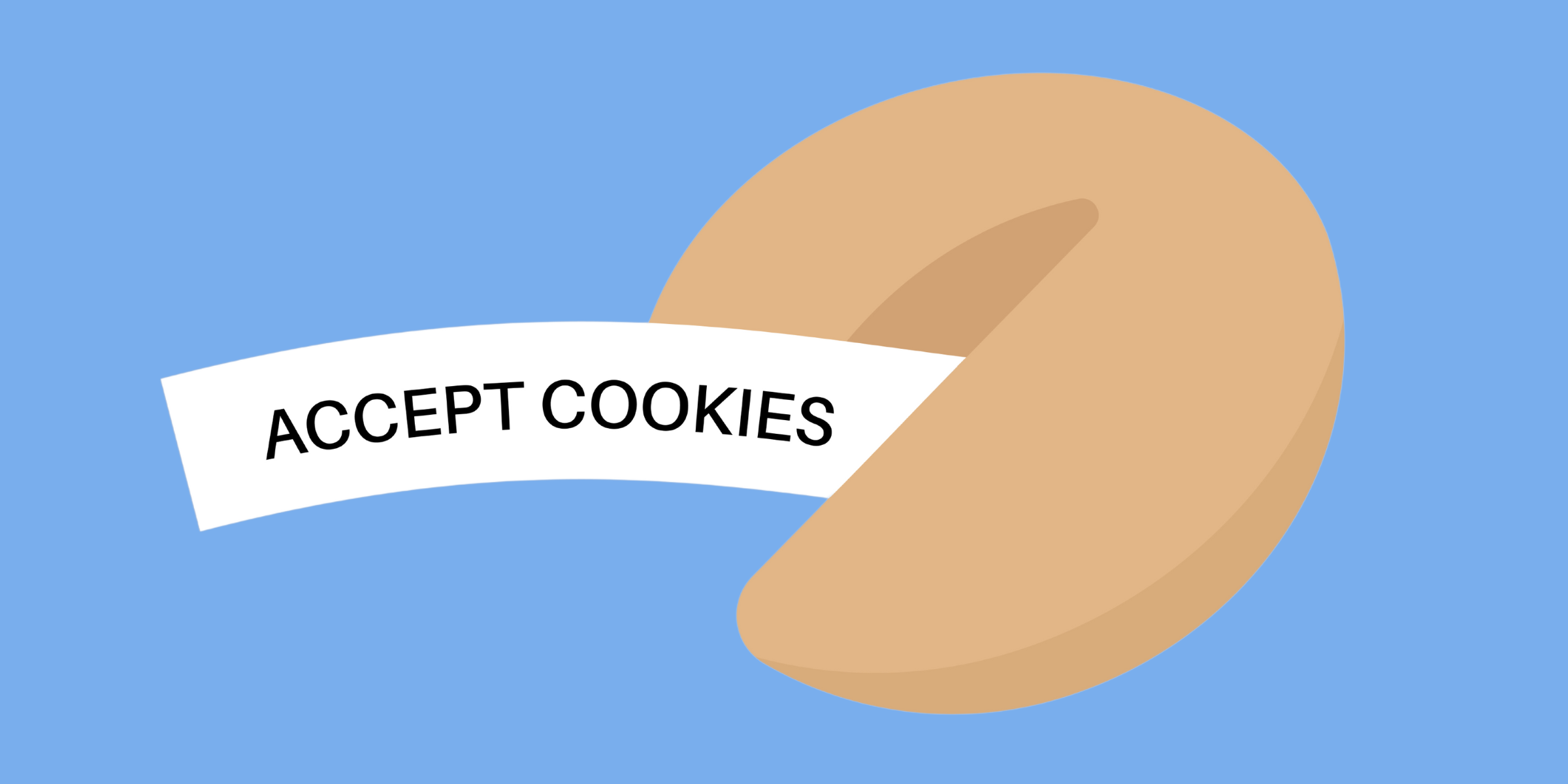Cookies, the digital kind, have been coming under fire in recent years. These tiny pieces of tracking code follow you around the internet, recording your website visits and behaviour. While they are extremely useful for companies to help them optimise their online customer journeys and the content they provide to their end users, they have also gained a negative connotation for being intrusive and gathering too much identifiable information about an individual.
How did GDPR impact cookies?
On 25 May 2018, many marketers had to update their data privacy practices with the introduction of the General Data Protection Regulation (GDPR). This meant that consumers had to freely consent to their data being stored and used by a company. The implementation of GDPR was a reaction to rising consumer concern over their data, and third-party cookies have since come under fire. In 2020, Google announced it would phase out third-party cookies by “late 2023”.

Why is it important that Google is phasing out third-party cookies?
Google dominates the search market with 92.5% of searches, so when it makes changes to its service, people tend to take notice. While other search engines, such as Firefox and Safari, have already blocked third-party cookies, there’s no doubt that Google’s removal of them will have the greatest impact on individual consumers.
Does Google plan to replace third-party cookies?
Google has recently announced that it will not be building “alternate identifiers to track individuals as they browse across the web”, nor will it use them in its products. Instead, Google has created Topics.
What is Google Topics?
Google Topics is Google’s latest proposal (a privacy initiative led by Google) for interest-based advertising. Originally, Google proposed using FLoCs (Federated Learning of Cohorts). FLoCs group people into “cohorts” based on their browsing history for the purpose of interest-based advertising. However, this proposal was found to gather data that was too granular, making it possible for fingerprinting techniques to identify individual users. Topics instead works by determining a handful of topics, like “makeup” or “golf”, that represent a consumer’s top interests for that week based on their browsing history. These topics are kept for three weeks, after which they are deleted from the device (they are not stored on any external servers). When a consumer visits a site, the Topics are shared with the site.
While to consumers this may seem like a win, some experts are cautious of Google’s move into a “cookieless world”. Creating Topics might be a move to raise Google’s walls up even higher, strengthening its hold on the market and forcing people to adopt its practices and software such as Search Console and Google Analytics. This could limit third-party platforms and the competition.

What does a cookieless world look like for marketers?
While marketers will miss third-party cookies, they have never been the favourite. First-party cookies have always been more accurate and an important part of marketing campaigns.
Digital campaigns
Return on investment might drop for digital campaigns while the dust settles, but this should rise once the market learns what works and what doesn’t with the new Topics system. Brand awareness campaigns will continue to go ahead under Topics; however, the “death” of third-party cookies may just be the start of consumers becoming more protective of their data. As consumers surf from website to website, they may choose to reject all tracking cookies, meaning the number of people in the pool for your campaign may get smaller.
Website tracking
As your customer visits your website they are tracked by first-party cookies, pieces of data your website needs to function and improve. These will not change. Third-party cookies, which follow customers around the internet to learn information about them, will change. This means that utilising your Google Analytics and Google Tag Manager to track website activity will become even more important. Ensure it is set up correctly to get accurate and useful data. If needed, ask a digital (such as ourselves)!
How to get ready for the death of third-party cookies
Here are a few steps we suggest you take to get your brand ready for late 2023, when Google’s third-party cookies end.
- Build up your first-party data
Use forms on your website and social media accounts to sign customers up; make sure your database is constantly up to date and GDPR compliant too.
- Try older marketing techniques
Brush the dust off these old campaign styles and try them out!
- Demographics-based marketing (focus resources on a defined group within a market, looking at age, gender and location, for example)
- Contextual advertising (where adverts are based on the content of the website itself)

Conclusion
While the industry will have to adapt, there will always be data on consumers available. For example, Meta’s Facebook and Instagram are a treasure trove of freely given data, thanks to their recent move to create a first-party cookie version of their Pixel. Read more about how third-party cookies will affect social here. Google, of course, would never let its pay-per-click profits plummet and is phasing out third-party cookies to stay relevant to consumers’ expectations.
While the end of third-party cookies is not until 2023, now is the perfect time to start planning for when they disappear. Our Digital team members are experts in navigating the digital world, so get in touch to find out how to build your first-party data and create campaigns that inspire your customers.